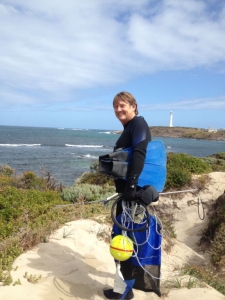“I come from a land down under
Where beer does flow and men chunder
Can’t you hear, can’t you hear the thunder?
You better run, you better take cover.”
Down Under
Men at Work (Ronald Graham Strykert / Colin James Hay)
For me, Western Australia–the place where I grew up–is very restorative, very relaxing. And, very inspiring. My boyhood there shaped the man I was to be with unique challenges, and equally unique opportunities:
Looking back, I had long shown the makings of a biomimic. When I was a boy growing up in Australia, I knew that fish were highly effective swimmers. They usually survived my admittedly ungainly attempts to catch them with a spear that I’d made from a broomstick and bent nails. Hoping to paddle farther out to good fishing sites without getting tired, I experimented with hammering the sides and bottom of my homemade metal canoe into the shapes I’d seen on fish and ducks. Of course, my canoe became easier to paddle, though I’m not sure if that could have been empirically measured or just seemed that way to my biased enthusiasm.
Regardless of efficacy, I was captivated and convinced that I was on the right path. These observations and experiments launched me into a lifelong career, first as a naturalist, observing nature’s exquisitely evolved shapes, and later as an inventor, adapting those shapes to design more efficient industrial devices. During the first half of my business career, I built and sold award-winning products and companies in Australia, the United Kingdom, and the United States, but it wasn’t until the late 1990s that I realized I was part of an emerging scientific discipline.
From the Greek bios, meaning “life,” and mimesis, “to imitate,” the term biomimicry was first coined in 1997 by Janine Benyus, the gifted naturalist, educator, and author of the landmark book Biomimicry. But biomimicry isn’t new. Humans have copied nature for millennia, with varying degrees of accuracy and understanding. Our early human ancestors borrowed solutions from the animals and plants they saw around them. Seals swimming below arctic ice create and maintain holes through which they can surface to breathe; Inuit hunters mimicked the way polar bears lie in wait beside those breathing holes to catch a rich, blubber dinner. Polynesian outrigger canoes’ design echoed that of floating seed pods. Aboriginal Australians even mimicked bird wings with their boomerangs. Certain shapes and tools were repeated around the world, created by people who were separated by vast geographical distances yet simultaneously immersed in and observing nature’s problem-solving strategies.
Excerpt from The Shark’s Paintbrush. Copyright Jay Harman, all rights reserved.








